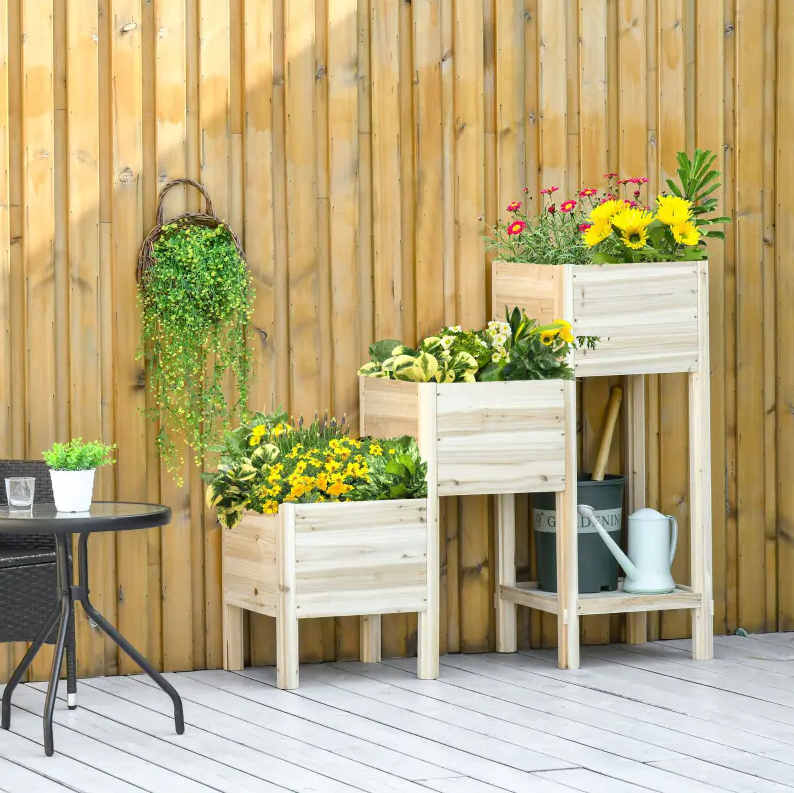How Wooden Outdoor Planters Drainage Systems Prevent Overwatering and Root Damage

The drainage design of Wooden Outdoor Planters plays a crucial role in maintaining plant health and ensuring long-term vitality. Proper water management is essential because excessive water retention can lead to root rot, fungal growth, and nutrient deficiencies, all of which compromise plant growth. Outdoor planters are frequently exposed to rain and irrigation, making it necessary to include well-thought-out drainage features that allow excess water to escape while retaining sufficient moisture for the roots. Without adequate drainage, even high-quality soil and nutrients cannot sustain healthy plants.
Most wooden planters are designed with pre-drilled drainage holes at the base, allowing water to flow freely and preventing pooling. The number, size, and placement of these holes are carefully considered to balance water retention and drainage efficiency. A single hole may not suffice for larger planters, so multiple holes evenly distributed across the bottom ensure uniform water escape. Some designs incorporate raised or slatted bases that lift the planter slightly, enhancing airflow and allowing water to drain away more effectively. These simple yet critical design elements reduce the risk of overwatering while promoting oxygen circulation to the roots.
The type of soil used in Wooden Outdoor Planters also interacts with the drainage system. Well-draining soil blends, often mixed with sand or perlite, allow water to pass through quickly while keeping the root zone adequately moist. Even the best drainage holes can become ineffective if dense or compacted soil blocks the flow of water. Therefore, proper soil preparation, combined with an effective drainage system, creates an optimal environment for plant roots to thrive. Some planters also include removable trays beneath the holes, which catch excess water for easy disposal, preventing stagnation while allowing the planter to be moved without spillage.
In addition to plant health, drainage design affects the longevity of the wooden structure itself. Excess water trapped at the base can accelerate wood decay or encourage mold growth, shortening the life of the planter. A well-engineered drainage system ensures that water is directed away from the wood, reducing moisture exposure and preserving both the planter and its contents. This dual benefit highlights why drainage considerations are a critical aspect of quality outdoor planter design.
In conclusion, the drainage design of Wooden Outdoor Planters is vital for sustaining plant health, preventing root damage, and prolonging the planters’ durability. Features such as multiple base holes, raised supports, and removable trays, combined with appropriate soil selection, create a balanced environment where plants can flourish. By facilitating proper water flow and oxygen availability, these drainage systems ensure that wooden planters provide both functional and long-lasting support for a variety of outdoor plants, from flowers and herbs to small shrubs.
This is Wooden Outdoor Planters. There are three prints on the front and drainage holes at the bottom of the flower box. A black non-woven bag is given as a gift to effectively prevent plant root rot and soil leakage.
Weight 5.5/6.3KG
Size 61*40*76CM
- Art
- Causes
- Crafts
- Dance
- Drinks
- Film
- Fitness
- Food
- Oyunlar
- Gardening
- Health
- Home
- Literature
- Music
- Networking
- Other
- Party
- Religion
- Shopping
- Sports
- Theater
- Wellness


